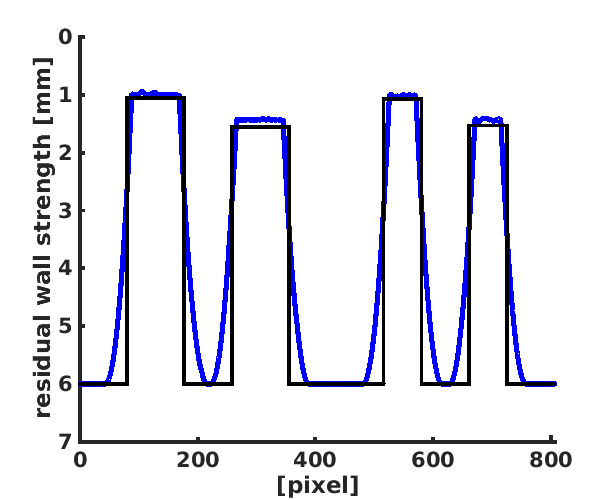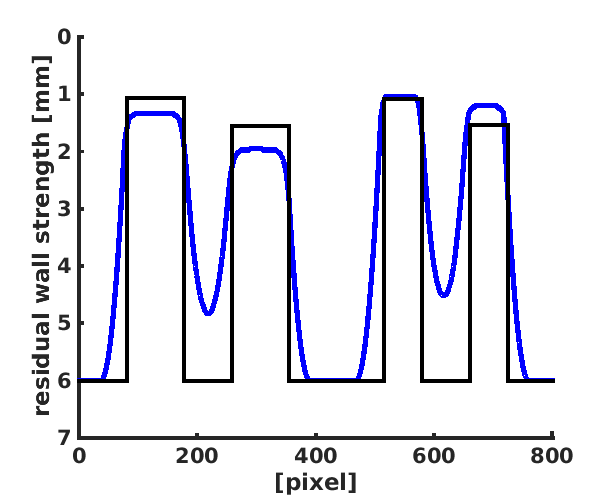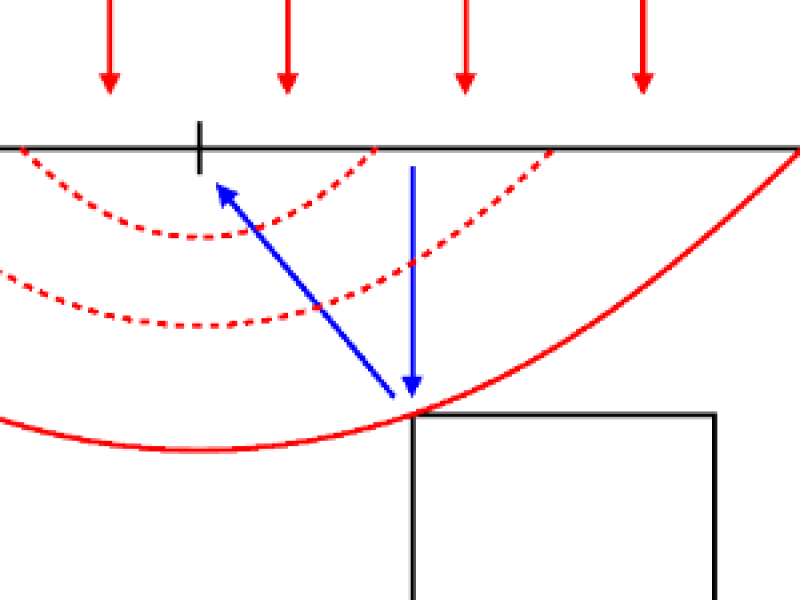Carbon-fiber reinforced composites are becoming more and more important in the production of light-weight structures, e.g. in the automotive industry. Thermography is often used for non-destructive testing of these products, especially to detect delaminations between different layers of the composite. In this project, we develop and validate fast and effective methods for defect reconstruction from thermographic measurements of such carbon-fiber reinforced composites. The reconstruction results shall not only allow to locate defects, but also give a quantitative characterization of the geometric properties of the defect.
For defect reconstruction, heuristics considering solely the heat flow normal to the surface of the specimen, deliver a fast way to assess the size and to a certain extent the depth of the defect within the sample. Since they are based on analytical solutions of simplified models, they are well suited for practical applications. For a more detailed inspection in order to obtain quantitative results, is strongly desirable to take lateral heat flows into account. A viable path to reconstruct the sub-surface defects of the specimen is to numerically solve the underlying PDE and optimize the geometric data and the thermal material parameters iteratively. This way to solve the inverse problem is computationally expensive, but paves the road to extract much more detailed information from the measurements, compared to the analytical reconstruction methods.
PDE-based Parameter Identification
For reconstruction of defects like flat bottom holes or delaminations, knowledge of material parameters is essential. Starting with values for the thermal diffusivity obtained from experiments we use a Gauss-Newton method for parameter identification. Posed in a Bayesian setting this allows to obtain some information about the reliability with which the parameters can be identified.
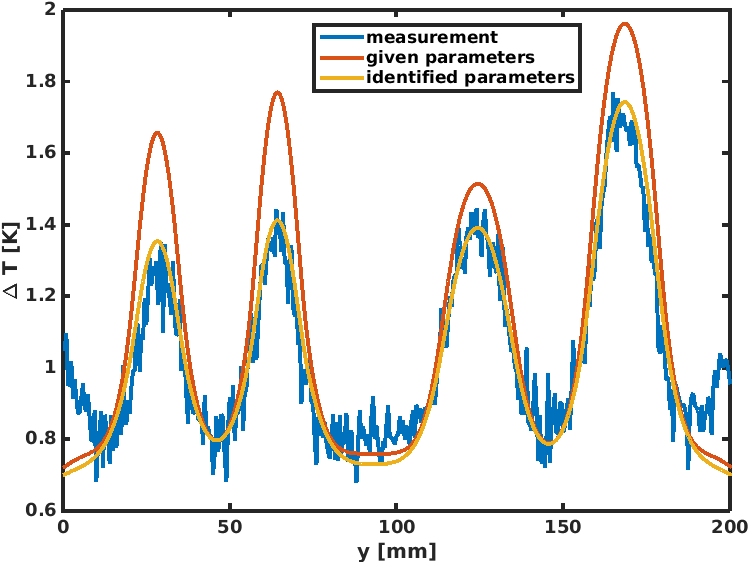
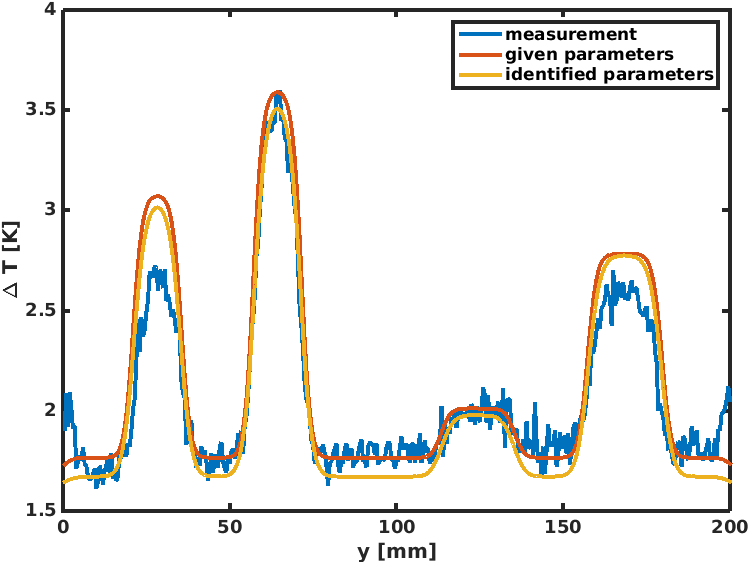
Heuristics for Geometry Reconstruction
Besides identification of material parameters, the reconstruction of the geometry of the test specimen, especially the often inaccessible rear surface, is of interest. The envelope method, for example, is based on 1D analytical solutions for the heat equation, with an extension to take lateral heat flow into account. It assumes isotropic heat conductivity. Then, points on the rear surface or defects contributing to a temperature increase at the front surface compared to the solution of the heat equation for a 1D semi-infinite body lie on parabolas. In CFRP, lateral heat flow is governed by the anisotropy of diffusivities, depending on the direction of the thermal wave propagation with respect to the fiber direction.
